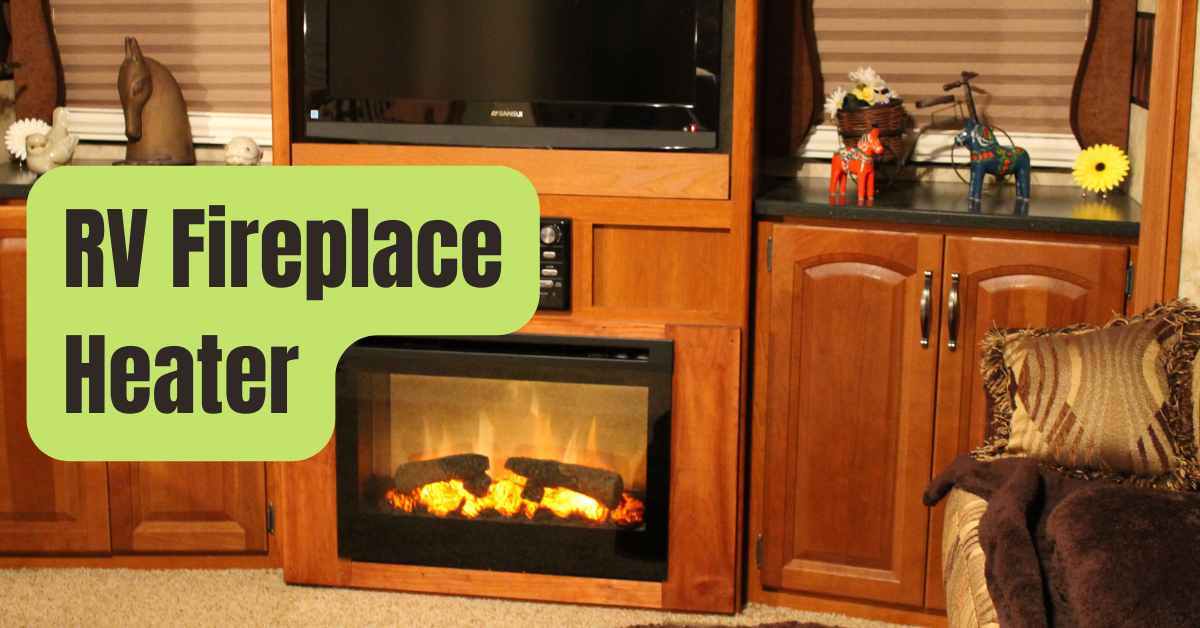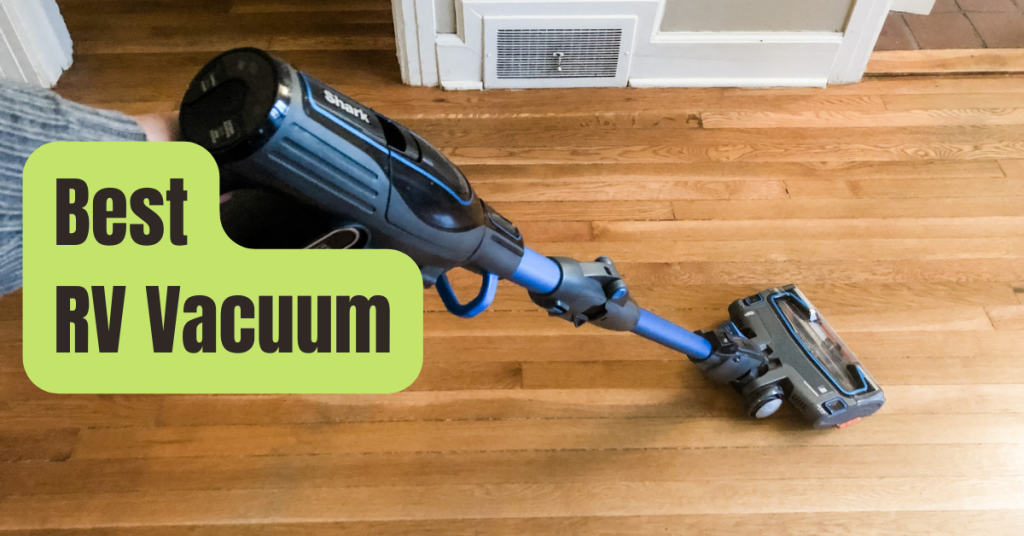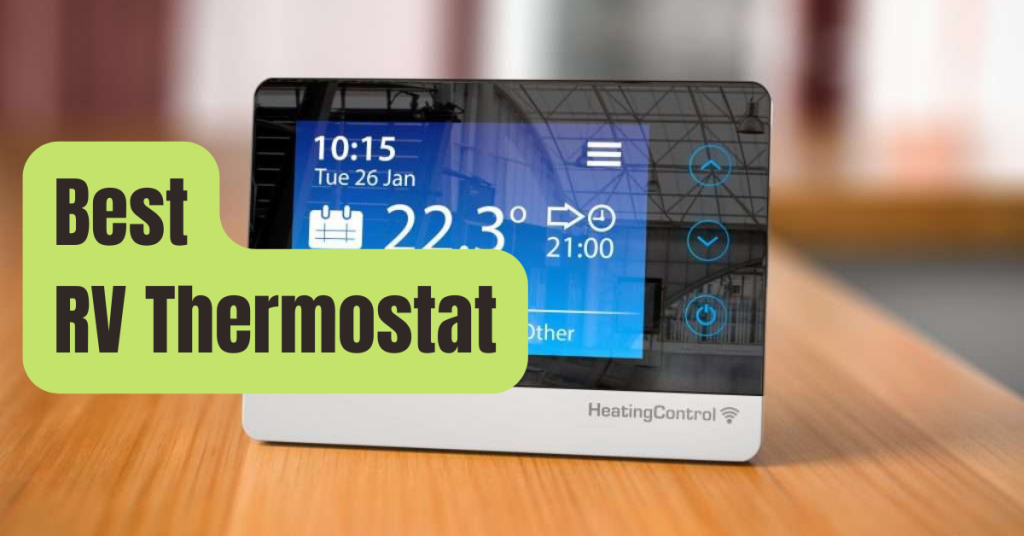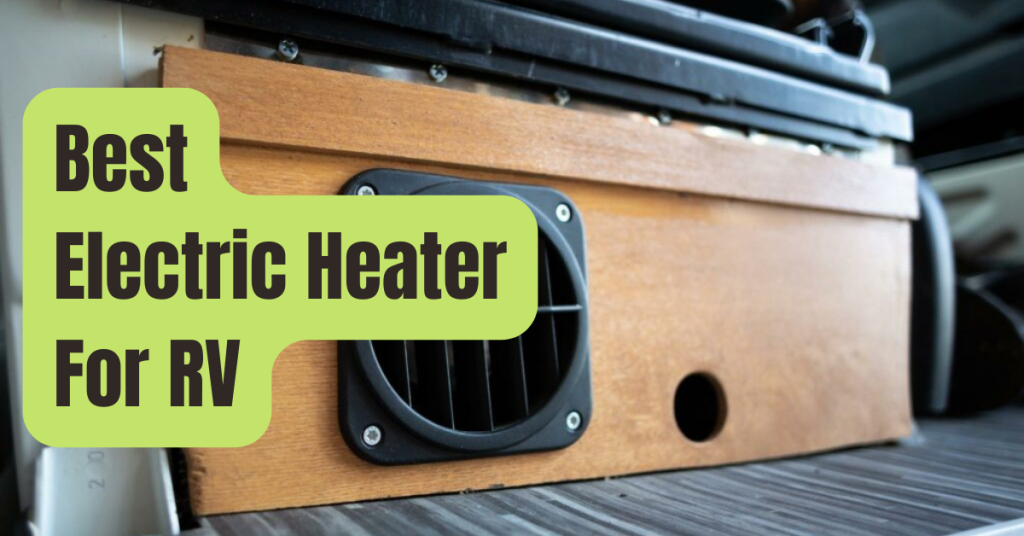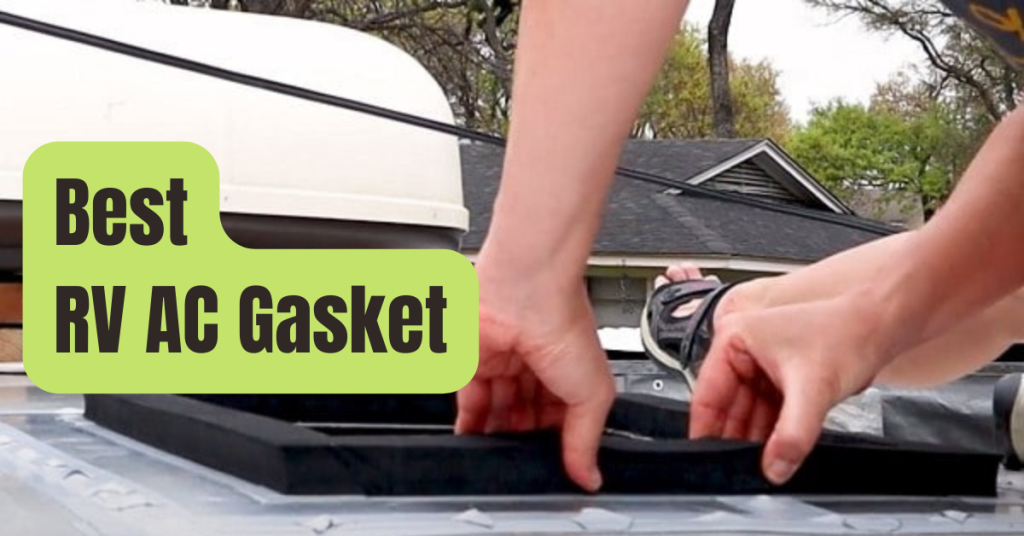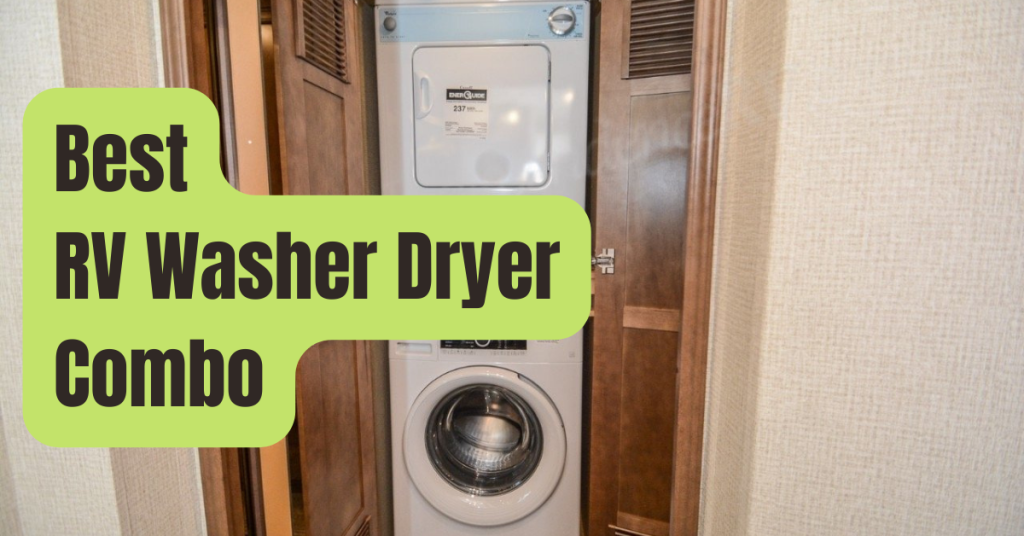Nothing like curling up in front of the RV fireplace that warms your camper on a chilly day.
Regrettably, a typical fireplace is unattainable in a camper.
RV fireplaces are now standard equipment in modern RVs and travel trailers, heating your camper and creating a wonderful, comfortable atmosphere.
Let’s examine what an RV fireplace is and how it functions.
How Are Campervan Fireplaces Heated?
An RV fireplace is just a space heater with ambiance-enhancing artificial flames that seem authentic.
Electric fireplaces use revolving metal reflectors and (often) LED lights to provide this lifelike flame appearance.
The reflection’s flashing lights give the appearance of a roaring fire.
Typically, a camper’s RV fireplace heats the space by blowing cold air over a heating element.
This heats the air and uses a fan to push the hot air outside.
That indicates that there isn’t any fuel to burn or waste to expel.
You just need to plug it in and turn it on to get started.
Compared to a typical wood-burning fireplace, an electric fireplace in an RV is safer and cleaner.
Particularly in a compact area like an RV.
It’s also a greener choice since nothing is burned.

Are RV Fireplaces Electric Or Gas?
Are RV fireplaces powered by gas or electricity? It is reasonable to inquire as gas is often used in house fireplaces.
RV fireplaces, however, are usually electric.
Electric fireplaces are ideal for RVs since they are more affordable, safer to use, and simpler to maintain.
Although they don’t resemble fireplaces, there are gas heaters for recreational vehicles.
In addition, if you want to utilize one, ventilation of some kind is required.

An RV Fireplace Installation Guide

Some campers include an integrated RV fireplace.
But is it possible to install a fireplace in an RV that lacks one?
Yes, you may include a fireplace in an RV.
You just need to locate a location for it and plug it in since they don’t need ventilation.
If your fireplace needs an enclosure, you might put it in the face of a cabinet instead of creating your own enclosure.
A common addition added to RV entertainment centers is an RV fireplace for heating campers.
The bottom portion of these spaces often has detachable, thin shelves.
Installing a fake fireplace there will allow you to create a cozy atmosphere.
How Much Room Can a Fireplace in an RV Heat?
You’ll note that RV fireplaces often carry a BTU rating, or British Thermal Units.
The majority of RV fireplaces have a BTU rating of roughly 5,000.
80 to 170 square feet may be heated with a 5,000 BTU heater.
A fireplace in your RV probably won’t heat the whole vehicle unless you have a compact travel trailer.
But they will emit enough heat to warm a room in your RV, such as the living area or bedroom.
A fireplace is another great tool for removing the cold from the air in the morning.
You can also see the power expressed in watts rather than BTUs.
An RV fireplace typically has a power of between 1,000 and 1,500 watts.
This usually produces enough power to heat an area of 100 to 150 square feet.
What Kind of Power Do RV Fireplaces Require?
Because the RV fireplace that heats the furnace in your camper uses electricity, it’s crucial to understand how much power each of these heaters will need.
If you use solar energy, you can be sure you have enough energy to fuel your fireplace in this manner.
The majority of RV fireplaces will include their wattage rating along with other electrical details.
As was already said, an RV fireplace uses around 1,000 to 1,500 watts of power.
If the wattage of the fireplace you built is not specified, you may alternatively compute the watts using the device’s amps and volts.
The watts of the gadget is calculated by multiplying the amps by the voltage.
Therefore, you need 1,200 watts if the fireplace consumes 10 amps at 120 volts.
10 amps x 120 volts = 1,200 watts
You may also compute the voltage and amps if you need to know them.
You can calculate amps by dividing watts by volts.
You can get the voltage by dividing the watts by the amps.
volts/ watts = amps amps/ watts= volts

5 Various RV Fireplace Features?
On a chilly day, keeping warm in your camper with an RV fireplace is a terrific idea.
However, not every RV fireplace is made equal.
Let’s examine the many characteristics of RV fireplaces.

#1. An Infrared Heater Or Fan
Most RV fireplaces work by forcing air over a heating element to produce heat.
This is how most space heaters operate.
This is an easy method for heating your RV’s interior.
The air may be dried using this procedure.
Some RV fireplaces heat the objects in the room using infrared radiation rather than by heating the air.
This technique instantly heats the environment while preventing the air from drying out.
#2. Safety Components
Many RV fireplaces will be equipped with safety measures to guard against fire and other dangers.
Overheating prevention is one of these safety features.
The appliance will turn off automatically if it senses that the temperature has risen to a dangerous level.
In this manner, the fireplace and the items around won’t be harmed or burnt.
The prevention of tip-overs is yet another crucial safety aspect.
When it senses that the portable RV fireplace has fallen over, it will turn itself off.
This is a fantastic feature for free-standing RV stoves to have.
#3. A Programmable Thermostat
You may modify the fireplace’s temperature with a thermostat.
Only a few settings, such as low, medium, and high, are available on certain fireplaces.
Modern RV fireplaces provide a variety of temperature settings to accommodate your comfort level.
#4. Fire Only Mode
Want the fire’s ambience without the heat? Many RV fireplaces provide just that.
There are “fire only” settings for these fireplaces, which only show the fake flames.
This function makes it possible to enjoy a fire by the fire without using the furnace throughout the summer.
#5. Independent or Integrated
Some camper heaters for RVs have their own enclosures and are free-standing.
Simply place them anywhere and plug them in.
These RV fireplaces are simple to transport and position where they are needed.
If you have a bigger trailer and an area with less foot traffic, freestanding RV fireplaces are fantastic.
Fireplace inserts for RVs are the alternative.
These are made to fit into pre-existing areas, such as when you remove a cabinet or replace an RV fireplace that is built-in.
Measure the available area before replacing an RV fireplace that is built-in.
There isn’t a one-size-fits-all RV fireplace insert, so you’ll need to pick the proper one for your vehicle.
The Top 4 RV Fireplaces for Campers
Let’s look at the greatest electric fireplaces for an RV now that you are well-versed on RV fireplaces.
#1. PuraFlame Klaus Electric Fireplace Insert

One of the top RV fireplace inserts on the market is the PuraFlame Klaus electric fireplace insert.
Additionally, it is the top-rated RV fireplace insert on Amazon.
This mobile home fireplace has realistic logs and flames, as well as a cracking sound to add to the ambience.
For ultimate comfort, it also has an adjustable thermostat.
For the optimum fit, this insert is also available in two sizes.
The PuraFlame Klaus electric fireplace insert includes two heat settings, three flame effects, and six distinct crackling noises.
Additionally, a remote control is included so you may adjust the settings from anywhere in your camper.
#2. TURBRO Firelake 27-Inch Electric Fireplace

This free-standing TURBRO RV fireplace has a sleek, contemporary appearance.
Because of its unique 3-sided design, you can see the fake flames from practically any direction.
It will undoubtedly provide a terrific atmosphere to the room no matter where you place it.
The manufacturer states that the 4,780 BTU TURBRO Firelake can heat up to 400 square feet.
It is ideal for heating your living room, dining area, and kitchen all at once because of its capacity to heat such a vast space.
Other features include a timer with a 30- to 6-hour setting and a thermostat that can be adjusted from 62 to 82 degrees Fahrenheit.
Additionally, this RV fireplace features a remote control, six different flame colors, and overheat safety.
#3. Comfort Zone Mini Ceramic Electric Fireplace

Consider this little Camper Comfort RV fireplace if you need room.
No matter how little your setup is, you can find room for it since it is just 8.25″ by 15.25″ and weighs only 4.5 pounds.
To keep you warm and comfortable, take this portable electric fireplace with you everywhere you go.
This RV fireplace produces 1,200 watts of heat despite its modest size.
It’s ideal for heating a small space, such a bedroom or bunk room.
In addition to having a fire-only mode, it also features high and low heat settings.
In addition to these advantages, the Comfort Zone tiny electric fireplace also has an overheat and tip-over prevention function to keep you safe.
#4. Duraflame 3D Infrared Electric Fireplace

This Duraflame electric fireplace is an infrared heater, not like the other RV fireplaces on our list.
That entails effective heating without causing the air to become dry, as a normal fan heater would.
The Duraflame unique 3D flame effect with 5 distinct brightness settings is used in this freestanding RV fireplace.
With the fire-only option, you may enjoy the flame displays even in the summer.
A thermostat that can be adjusted on this fireplace ranges in temperature from 62°F to 82°F.
Up to 1,000 square feet may be heated with its 5,200 BTU rating.
Along with all of these capabilities, the Duraflame RV fireplace also comes with a remote control and overheating protection for your safety.
Nothing Heats Your Camper Better Than an RV Fireplace

Although a genuine fire can’t burst and crackle inside your camper, you may enjoy the next best thing.
Your camper may still have a nice atmosphere with an electric RV fireplace heating it.
Instead, an RV fireplace functions more like a space heater that simulates fire with light effects.
However, some RV fireplaces employ infrared heating to provide heat without drying the air.
Fan heaters make up the majority of RV fireplaces.
Other features include temperature, overheat prevention, flame color adjustment, and fire-only modes.
Using an RV fireplace is as simple as plugging it in and turning it on once you have one.
Then, just like by a real fireplace, you’re prepared to cuddle up by the flames and enjoy some hot chocolate or a nice book.
The distinction won’t even be apparent to you.

